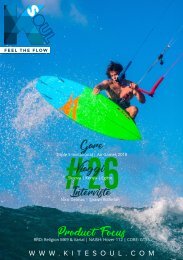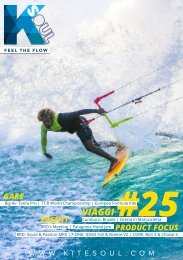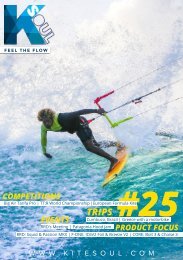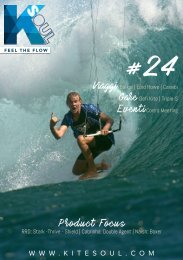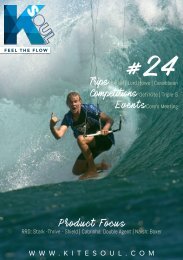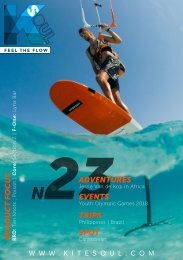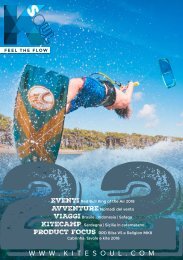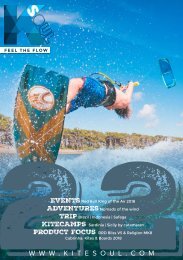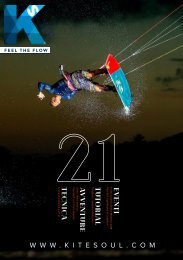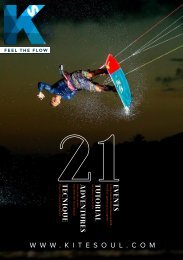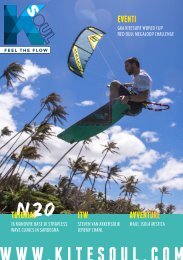Kitesoul Magazine #12 English Edition
In this issue: Pre-event Triple S, IKA Kiteboarding World Championship, RC: Colleen Carroll, Kitefoil European Cup, Trip: RRD Cape Town, Australia, Turks & Caicos, ITW: Mikaili Sol, Julien Leleu, Patri McLaughlin in Jaws, Shape Wave: Sky Solbach, Pre-event Kite Babes, F-one Hydrofoil, Focus on products, Wave and Freestyle tutorials.
In this issue: Pre-event Triple S, IKA Kiteboarding World Championship, RC: Colleen Carroll, Kitefoil European Cup, Trip: RRD Cape Town, Australia, Turks & Caicos, ITW: Mikaili Sol, Julien Leleu, Patri McLaughlin in Jaws, Shape Wave: Sky Solbach, Pre-event Kite Babes, F-one Hydrofoil, Focus on products, Wave and Freestyle tutorials.
- No tags were found...
You also want an ePaper? Increase the reach of your titles
YUMPU automatically turns print PDFs into web optimized ePapers that Google loves.
140<br />
TECH<br />
Sky Solbach - Waveboard Shapes<br />
AR_Scoop-Rocker-line?<br />
Sky Solbach_I always think of rocker as a multiple<br />
curves. You have the center line rocker, then<br />
you have the rail rocker and you have the rocker<br />
in between. I constantly compare how my bottom<br />
contours (V, Concave, convex etc) are factoring<br />
into my rocker lines on the rail, center and in<br />
between. You must also find the correct balance<br />
between rocker and outline curvature and this<br />
can be a very tedious task when developing a new<br />
design. You can’t just take any rocker and apply it<br />
to a new outline. It just won’t work. You have to<br />
develop the rocker to match the outline and vise<br />
versa. This includes taking into account bottom<br />
shapes. Everything must be working in harmony.<br />
Please see the shots with the examples!<br />
AR_Rails?<br />
Sky Solbach_Generally speaking, rounder rails<br />
are more forgiving and sharper rails engage more<br />
to create grip. This is the reason you see tails of<br />
surfboards with square edges and the noses with<br />
completely round 50/50 rails. Rail thickness and<br />
rail apex also play a big role in a board’s performance.<br />
Thicker rails have more deflection (they<br />
bounce off the water) than thinner rails, which is<br />
great for creating speed in small waves, but you<br />
wouldn’t want it on a big wave board where you<br />
want to control speed. By moving the rail apex up<br />
or down (high rail/low rail) you can also fine tune<br />
how the board will handle. The rails are like the<br />
board’s “feelers” in the water and when I design<br />
a board I try to visualize how the rail shape will<br />
affect performance and I design the rail shape<br />
to fit each model. Please see the shots with the<br />
examples!






